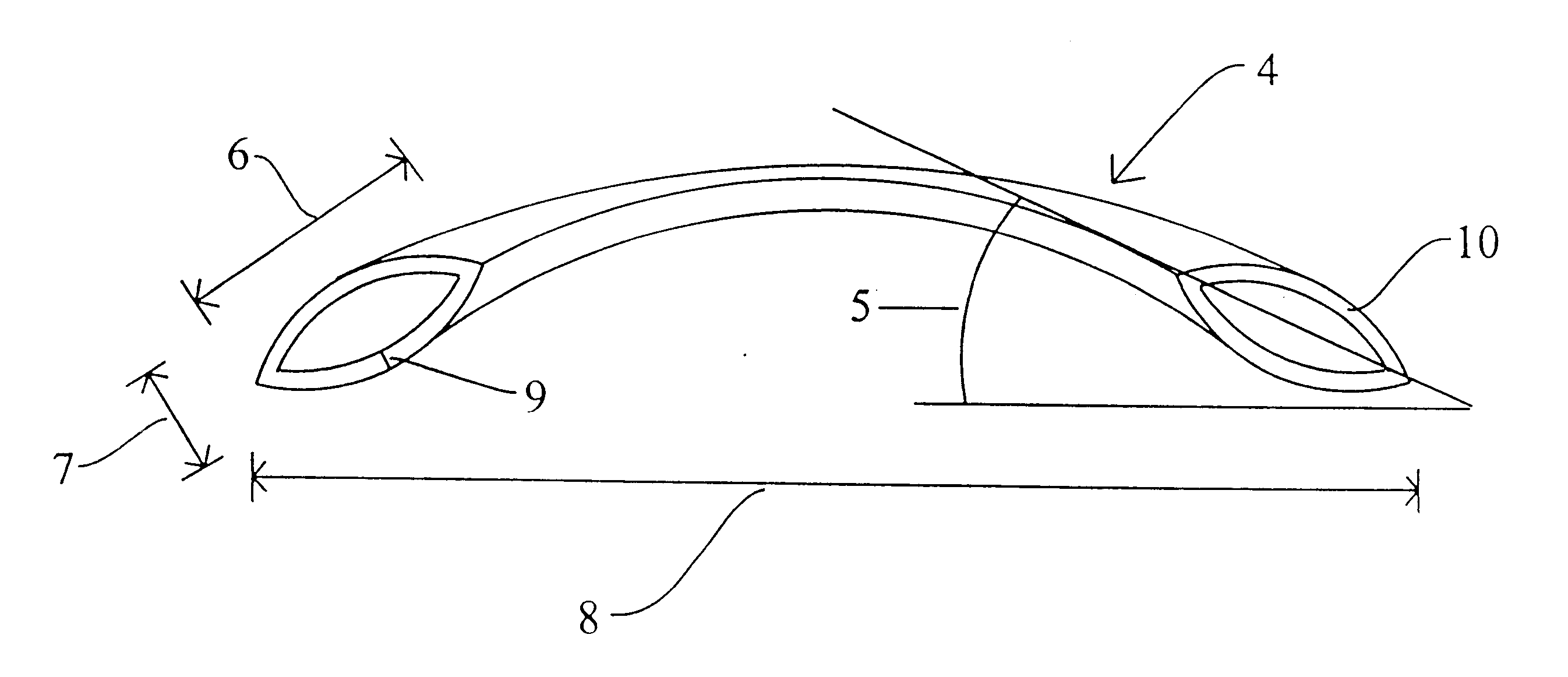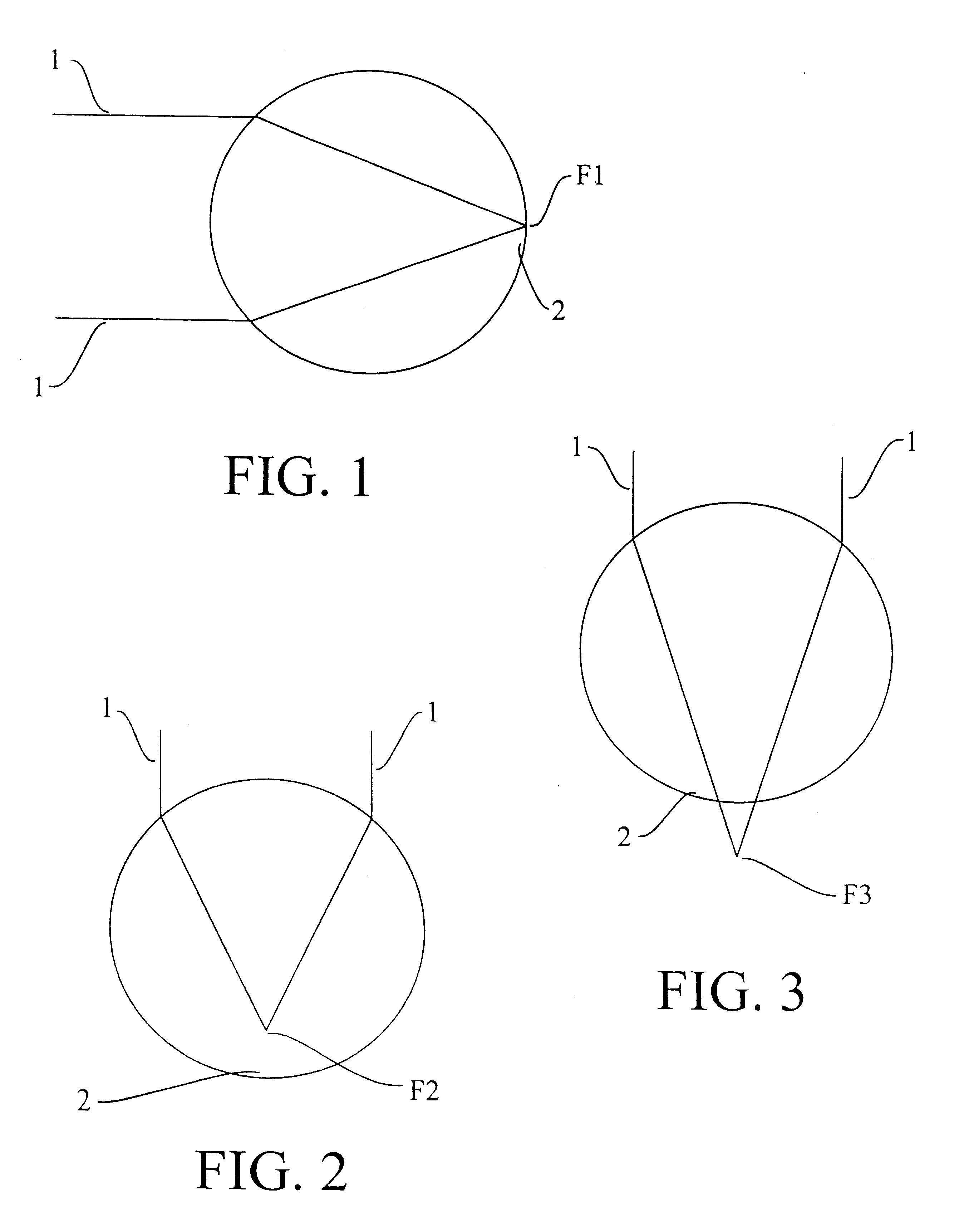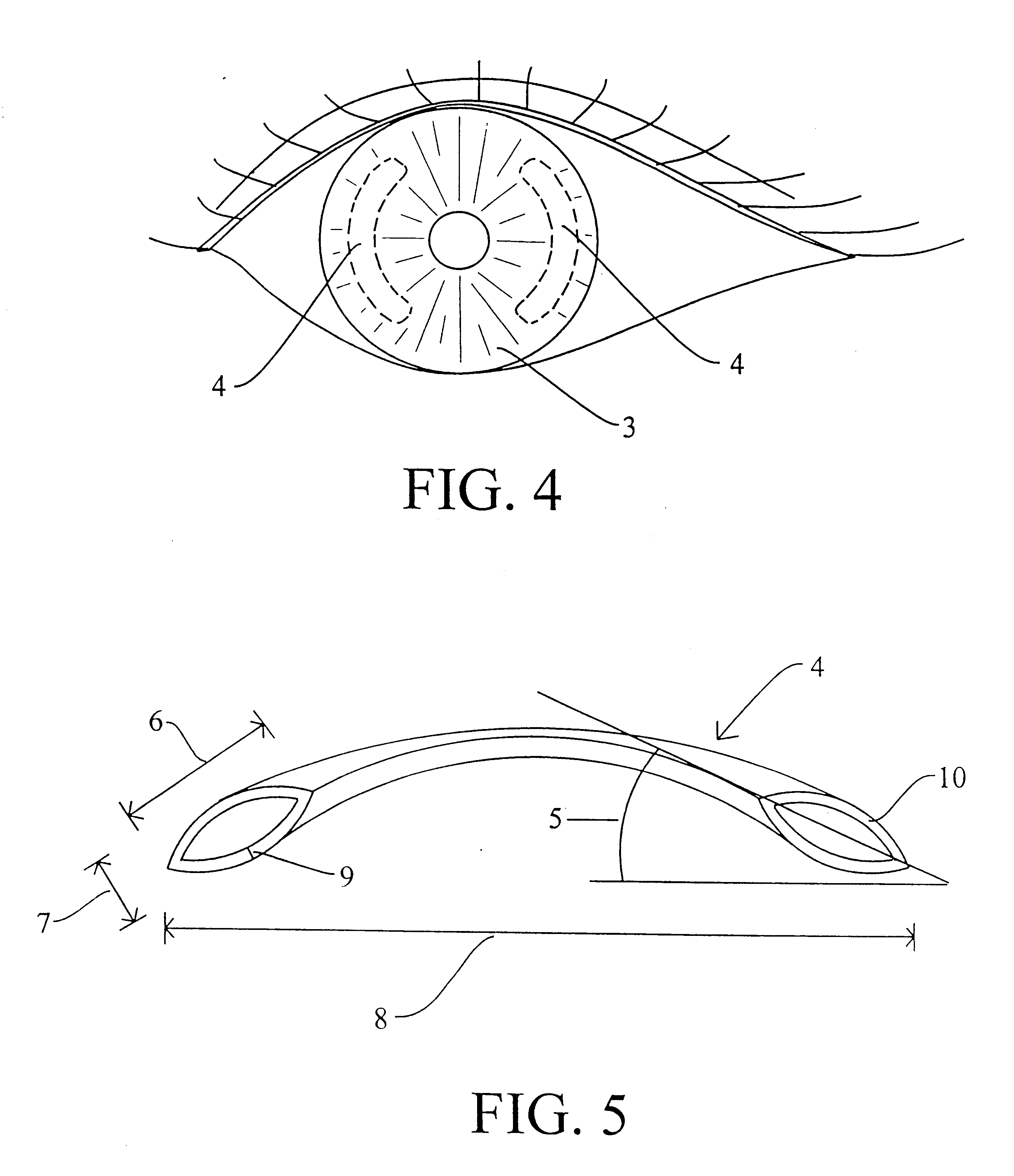Method and apparatus to correct refractive errors using adjustable corneal arcuate segments
a technology of arcuate segments and corneal arcuate, which is applied in the field of methods and apparatus for adjusting corneal curvature, can solve the problems of limited predictability, lack of reversibility, and corneal refractive surgery, and achieve the effect of steeping the corneal curvature and being easily modified
- Summary
- Abstract
- Description
- Claims
- Application Information
AI Technical Summary
Benefits of technology
Problems solved by technology
Method used
Image
Examples
Embodiment Construction
The disclosure of the pending U.S. patent application Ser. No. 08 / 829,846 filed Apr. 1, 1997 and application Ser. No. 08 / 856,650 filed May 15, 1997 are incorporated herein by reference. The disclosure of the provisional application entitled "Method and apparatus for adjusting corneal curvature", filed Aug. 4, 1997 and describing sub-embodiments that "may have an arc length of approximately 160 degrees.+-.15 degrees such that two halves of an annular device are implanted in the lamellar channel opposite to each other", is also included herein by reference.
Referring more particularly to the drawings, there is shown in FIG. 4 the apparatus of the invention which is comprised of adjustable corneal annular segments 4 implanted within the cornea 3 of the eye. The adjustable corneal annular segment is formed of an enclosure as demonstrated in FIG. 5 for receiving a filler which is easily removable after the annular segment is implanted into the cornea. The filler material and outer shell h...
PUM
 Login to View More
Login to View More Abstract
Description
Claims
Application Information
 Login to View More
Login to View More - R&D
- Intellectual Property
- Life Sciences
- Materials
- Tech Scout
- Unparalleled Data Quality
- Higher Quality Content
- 60% Fewer Hallucinations
Browse by: Latest US Patents, China's latest patents, Technical Efficacy Thesaurus, Application Domain, Technology Topic, Popular Technical Reports.
© 2025 PatSnap. All rights reserved.Legal|Privacy policy|Modern Slavery Act Transparency Statement|Sitemap|About US| Contact US: help@patsnap.com



